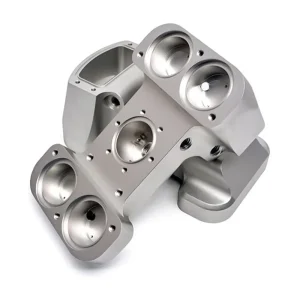In the realm of machining and manufacturing, the choice between a thread tap and a thread mill can significantly impact the success and efficiency of your project. Both techniques play a crucial role in creating threaded holes and surfaces, but they differ in their approach, capabilities, and applications. Understanding these distinctions is essential for selecting the optimal tool for your specific needs.
This article delves into the world of thread tapping and thread milling, providing a comprehensive comparison to help you make an informed decision. We’ll explore the unique characteristics, advantages, and use cases of each method, empowering you to choose the most suitable approach for your manufacturing endeavors.
Key Takeaways
- Thread taps and thread mills are two distinct machining techniques used to create threaded holes and surfaces.
- Understanding the differences between these methods is crucial for selecting the optimal tool for your specific project requirements.
- Factors such as speed, efficiency, precision, and cost-effectiveness will be considered when comparing thread taps and thread mills.
- The choice between a thread tap and a thread mill will depend on the material, thread depth, and industry application of your project.
- Shixinproto offers a wide range of high-quality thread taps and thread mills to cater to your threading needs.
What is a Thread Tap?
A thread tap is a specialized cutting tool used to create internal threads in materials like metal, plastic, and wood. It’s an essential tool in various industries, from automotive to aerospace, where the ability to form internal threads is crucial for assembling components and parts. The tapping process involves using the thread tap to cut threads into a pre-drilled hole, forming a threaded cavity that can accommodate a matching bolt or screw.
Tapping Process and Tool Functionality
The tapping process is straightforward, yet it requires precision and skill. The thread tap is inserted into a pre-drilled hole and rotated clockwise, cutting the threads as it goes. The grooves on the tap’s surface act as cutting edges, removing small amounts of material to create the threads. This process is often done by hand, using a tap wrench, or in a machine, using a tapping attachment or spindle.
Types of Thread Taps and Their Uses
- Hand Taps: These are the most common type of thread taps, designed for manual tapping operations. They come in various sizes and thread profiles to suit different applications.
- Machine Taps: Specifically made for use in power tools or CNC machines, these taps are ideal for high-volume production and ensure consistent thread quality.
- Spiral Point Taps: Featuring a pointed tip, these taps are used for tough materials or blind holes, as they can start the thread without the need for a pre-drilled pilot hole.
The choice of thread tap depends on the material being tapped, the thread size, and the desired depth of the thread. Understanding the different types of thread taps and their functionalities is crucial for selecting the right tool for the job and achieving optimal results.
What is a Thread Mill?
While thread taps are a popular choice for creating internal threads, thread mills offer a versatile alternative for both internal and external threading operations. The thread milling process utilizes a rotating cutting tool to carve out the desired thread profile, providing a high degree of flexibility and precision in the threading process.
Thread Milling Process and Tool Functionality
The thread milling process involves a thread mill, a rotating cutting tool that travels along the workpiece, cutting the threads in a helical motion. Unlike thread taps, thread mills can create both internal and external threads, making them a more versatile choice for a wide range of applications. The tool functionality of thread mills allows for accurate thread depth control, ensuring consistent and reliable threading results.
Types of Thread Mills and Their Benefits
- Single-Point Thread Mills: These thread mills feature a single cutting edge, making them ideal for creating simple, straight-walled threads with a high degree of precision.
- Multi-Point Thread Mills: These thread mills have multiple cutting edges, allowing them to create more complex thread profiles, such as tapered or multi-start threads, with increased efficiency and speed.
The key benefits of thread mills include their ability to handle a wide range of materials, their flexibility in creating both internal and external threads, and their precise control over thread depth and quality. These advantages make thread mills a popular choice for various industries, from automotive to aerospace, where high-quality threading is essential.
| Thread Mill Type | Specialization | Advantages |
|---|---|---|
| Single-Point Thread Mill | Simple, straight-walled threads | High precision, versatility |
| Multi-Point Thread Mill | Complex thread profiles (tapered, multi-start) | Increased efficiency and speed |
By understanding the unique capabilities of thread mills and their various types, manufacturers can make informed decisions on the best threading solution for their specific project requirements, ensuring high-quality results and efficient production processes.
Key Differences Between Thread Taps and Thread Mills
When it comes to creating internal threads, manufacturers have two primary options: thread taps and thread mills. While both techniques aim to form precise threads, they differ in several crucial aspects that can impact the efficiency, precision, and cost-effectiveness of the process.
Speed and Efficiency in Thread Creation
Thread mills generally offer a faster and more efficient approach to thread creation compared to thread taps. The milling process can produce threads at a higher speed, making it a more productive option for high-volume applications. In contrast, thread taps require a more time-consuming process, as they rely on manually cutting the threads one by one.
Precision and Thread Quality Comparison
Both thread taps and thread mills are capable of producing high-quality threads, but thread mills often have a slight edge in terms of precision. The controlled and consistent motion of the milling cutter can result in more uniform and consistent thread profiles, ensuring superior thread quality. Thread taps, while still highly accurate, may be more susceptible to variations due to the manual nature of the tapping process.
Cost-Effectiveness and Tool Wear
When it comes to cost-effectiveness, thread mills often have an advantage over thread taps. Thread mills can be reused multiple times, as the milling cutters can be resharpened, making them a more cost-effective solution in the long run. In contrast, thread taps have a relatively shorter lifespan, as they are subject to more wear and tear during the tapping process, requiring more frequent replacement.
By understanding the key differences between thread taps and thread mills, manufacturers can make an informed decision on the best approach for their specific project requirements, considering factors such as speed, precision, and cost-effectiveness.

When to Use a Thread Tap vs a Thread Mill
Determining whether to use a thread tap or a thread mill depends on several factors, including the material of the workpiece, the required thread depth, and the production volume.
Material Considerations
Thread taps are generally well-suited for softer materials, such as aluminum, brass, and mild steel. These materials can be easily tapped without excessive wear on the tap. On the other hand, thread mills are more versatile and can handle a wider range of materials, including harder materials like stainless steel and titanium.
Thread Depth
For shallow thread depths, thread taps are often the more cost-effective option. However, as the thread depth increases, thread mills become more advantageous, as they can create deeper threads without the risk of tap breakage.
Application Examples in Different Industries
- Aerospace: Thread mills are commonly used in the aerospace industry for their ability to create complex, high-precision threads in hard materials like titanium and inconel.
- Automotive: Thread taps are widely used in the automotive industry for fastening components, such as engine blocks and transmissions, where the thread depth is relatively shallow.
- Medical Device Manufacturing: Both thread taps and thread mills are used in the production of medical devices, depending on the material and thread depth requirements.
| Criteria | Thread Tap Applications | Thread Mill Applications |
|---|---|---|
| Material | Softer materials (e.g., aluminum, brass, mild steel) | Wider range of materials, including harder materials (e.g., stainless steel, titanium) |
| Thread Depth | Shallow thread depths | Deeper thread depths |
| Industry Examples | Automotive, general manufacturing | Aerospace, medical device manufacturing |
By considering the material, thread depth, and production requirements, manufacturers can make an informed decision on whether to use a thread tap or a thread mill for their specific project.

Why Choose Shixinproto for Your Threading Needs?
At Shixinproto, we take pride in our expertise in providing top-notch threading services. Whether you require thread tapping or thread milling solutions, our advanced machining capabilities and commitment to precision ensure that your components meet the highest standards. With years of experience serving diverse industries, we have the knowledge and resources to deliver customized threading solutions tailored to your specific needs.
Our state-of-the-art manufacturing facilities are equipped with the latest technology, enabling us to achieve unparalleled accuracy and repeatability in thread production. From simple to complex geometries, our team of skilled technicians meticulously oversees every step of the process, ensuring exceptional quality control and meeting your requirements with unwavering attention to detail.
At Shixinproto, we understand that your success is our success. That’s why we go the extra mile to understand your project’s unique challenges and provide innovative solutions that exceed your expectations. With a relentless focus on customer satisfaction, we strive to be your trusted partner in all your threading needs, delivering precision-engineered components that drive your business forward.





